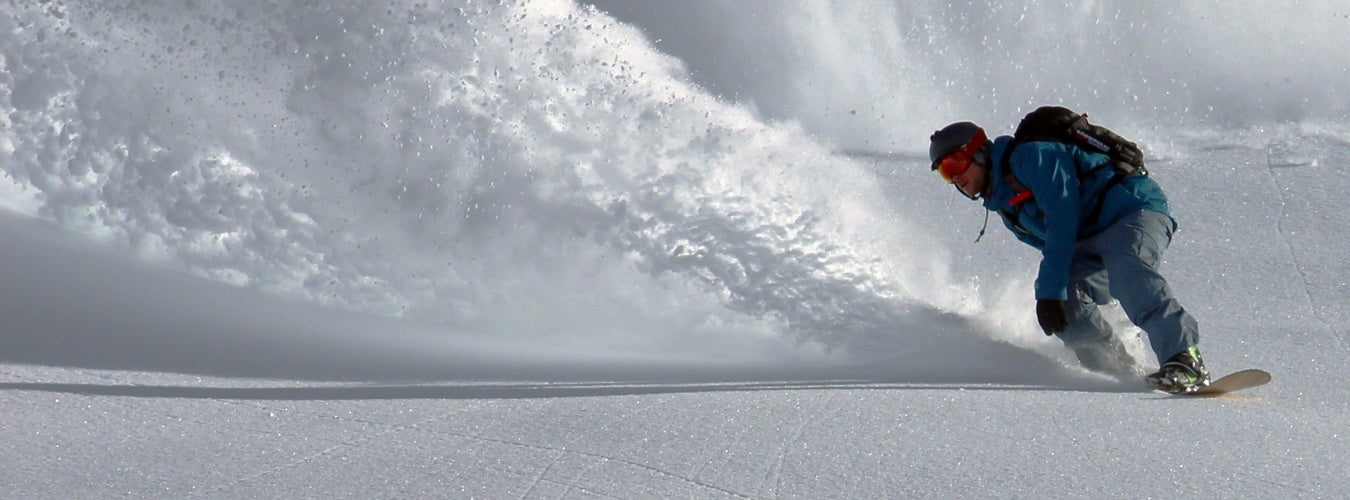Available for purchase in the USA
US

Snowboarding is an exhilarating sport that demands a unique combination of strength, balance, flexibility, and agility. However, when the snow melts and the season ends, it doesn't mean your snowboard training has to come to a halt. Off-season training is the key to maintaining and enhancing your skills until the next snowstorm rolls in.
In this blog, we’ll share 7 simple training exercises for snowboarding that you can do during the off-season to keep your body prepared for the slopes. By incorporating these exercises into your routine, you’ll stay strong, flexible, and mentally sharp for the next snowboarding season, ensuring you hit the slopes with confidence.

Leg strength is at the core of snowboarding. Your legs control your speed, turns, and landings. Squats are one of the best exercises to build strength in your legs and hips, which are key to mastering snowboarding moves like carving and jumping.
For added challenge, try jump squats or single-leg squats to simulate the explosive power needed for jumps and landings.

A strong core is essential for maintaining balance while snowboarding, especially when you’re performing tricks or going for fast turns. A well-developed core helps you stay centered and react quickly to the terrain.

Snowboarding requires powerful, explosive movements—especially when you're taking off for jumps, spins, and grabs. Box jumps are a fantastic way to develop the explosive power needed for these high-intensity movements.
This exercise will not only strengthen your legs but also improve your agility and body control in the air.

Quick turns and edge control are vital for carving down the slopes. Lateral bounds simulate the side-to-side movement required when you’re carving, giving you more control over your snowboard when you’re making tight turns or shifting weight between edges.
Lateral bounds will enhance your agility and help improve your turning ability on the slopes.

Snowboarding is a physically demanding sport that requires both strength and endurance. Jump rope is a great cardiovascular workout that improves footwork, coordination, and agility—essential skills for every snowboarder.
Jump rope is not only great for improving your fitness level but also enhances your timing, balance, and coordination on the slopes.

Resistance bands are a simple yet effective tool for improving strength and flexibility. They can help mimic snowboarding movements, like carving or edge control, and target the same muscles you’ll use on the slopes.
Incorporating these exercises will ensure you have the strength and flexibility needed to perform various movements on your snowboard.

Upper body strength is crucial for controlling your snowboard, especially when it comes to grabs, spins, and maintaining stability during landings. Plyometric push-ups are an excellent way to develop the explosive power required for those snowboarding moves that demand upper body strength.
This exercise improves explosive strength and body control, which are essential for grabbing the board mid-air or absorbing landings.
If you're looking to continue improving your snowboard skills during the off-season, the Matace Snowboard Tricks Training Mat is a game-changer. Designed to mimic the feel of real snow, this mat lets you practice essential ground tricks like buttering, grabs, and spins from the comfort of your home, no matter the season.
The Matace mat features a brush-hollow surface that reduces friction and enhances smoothness, closely simulating the sensation of riding on snow. Whether you're working on your balance, perfecting your grabs, or mastering spins, this mat allows you to practice with confidence and precision.
Thanks to its interlocking design, you can easily customize the mat’s dimensions to fit your space, making it perfect for any room in your house or garage. Plus, it’s built to last with wear-resistant PE material, offering exceptional durability for consistent training.
With the Matace Snowboard Training Mat, you can enhance your snowboard skills year-round and keep your tricks sharp, even when the slopes are far from sight. Its realistic design and easy setup make it the ideal tool for snowboarders looking to stay in shape and improve their technique at home.
Off-season training for snowboarding is an essential part of staying in top form, whether you're preparing for the next snowboarding season or simply looking to improve your skills.
Stay committed to your off-season training routine, and you’ll return to the slopes stronger and more skilled than ever. Keep pushing yourself, and when the snow arrives, you'll be ready to conquer it!
Leave a comment